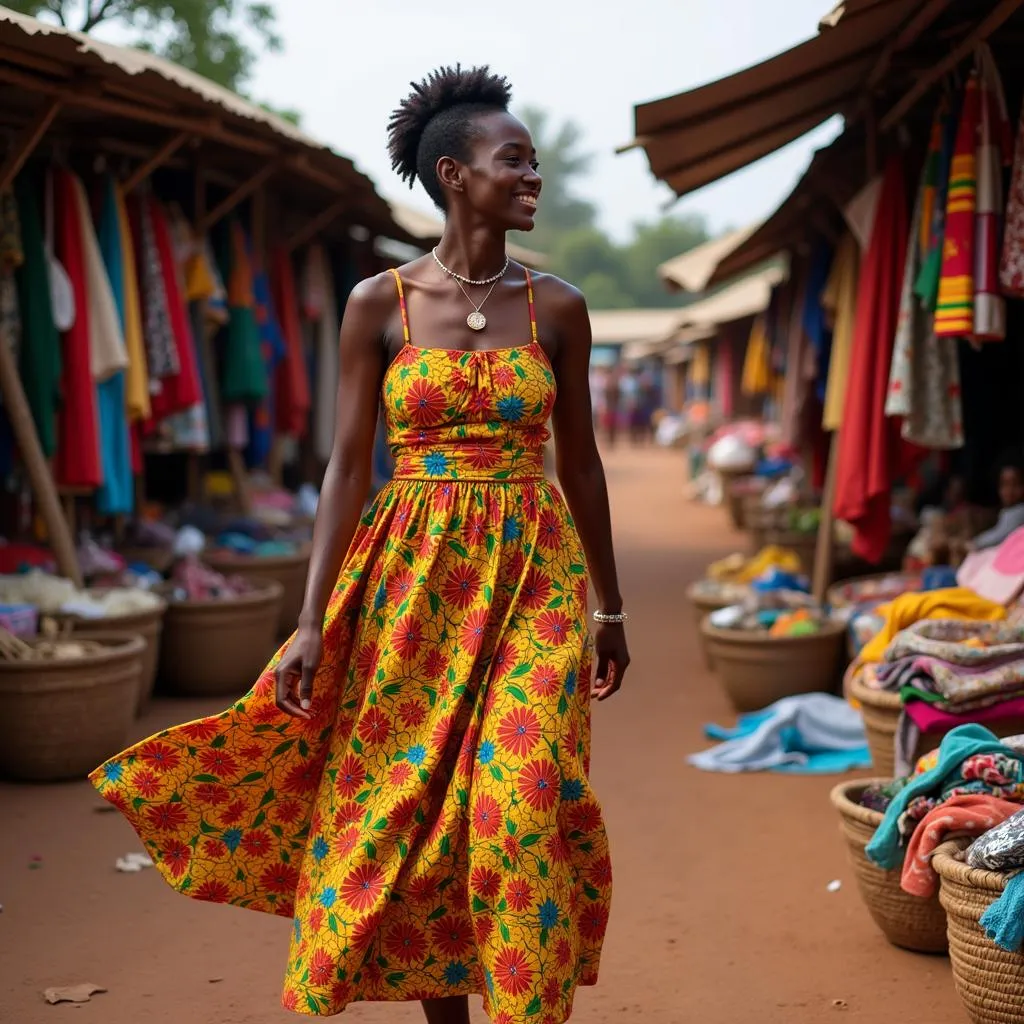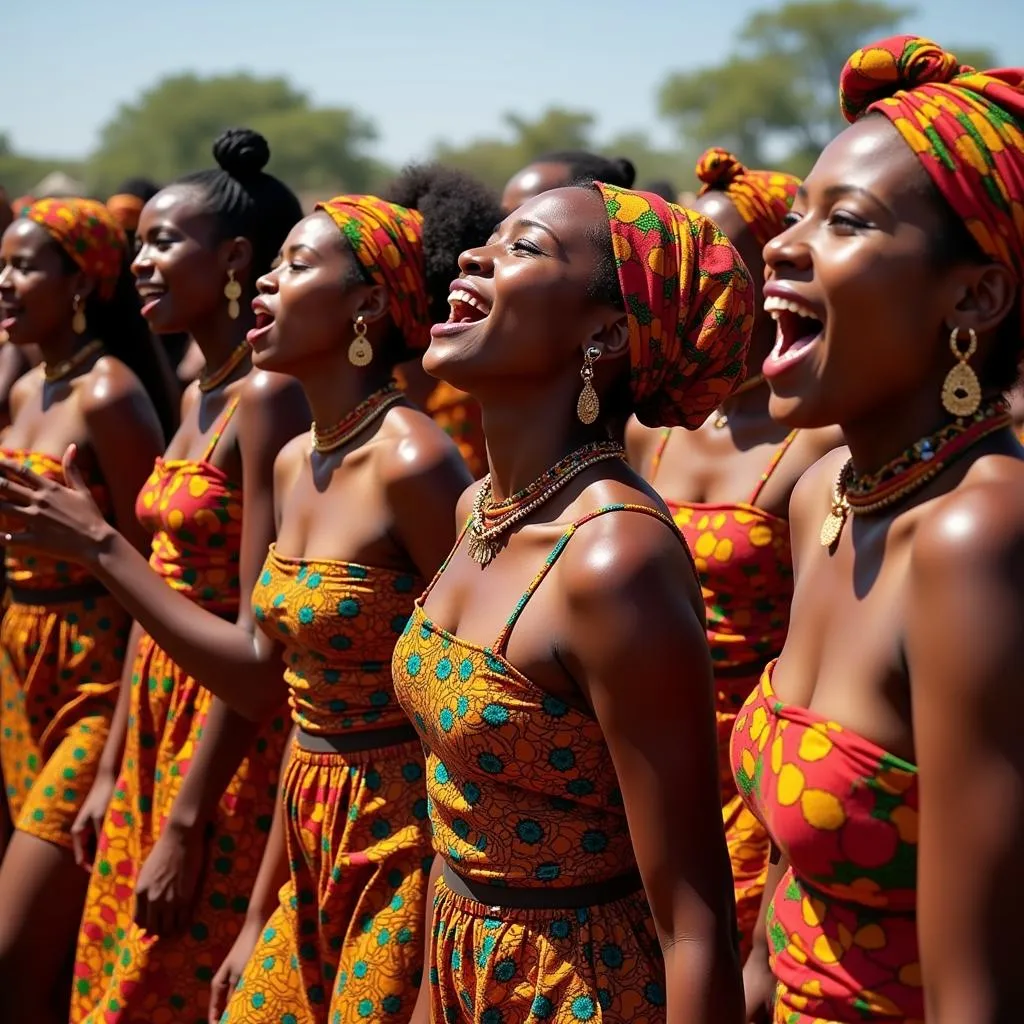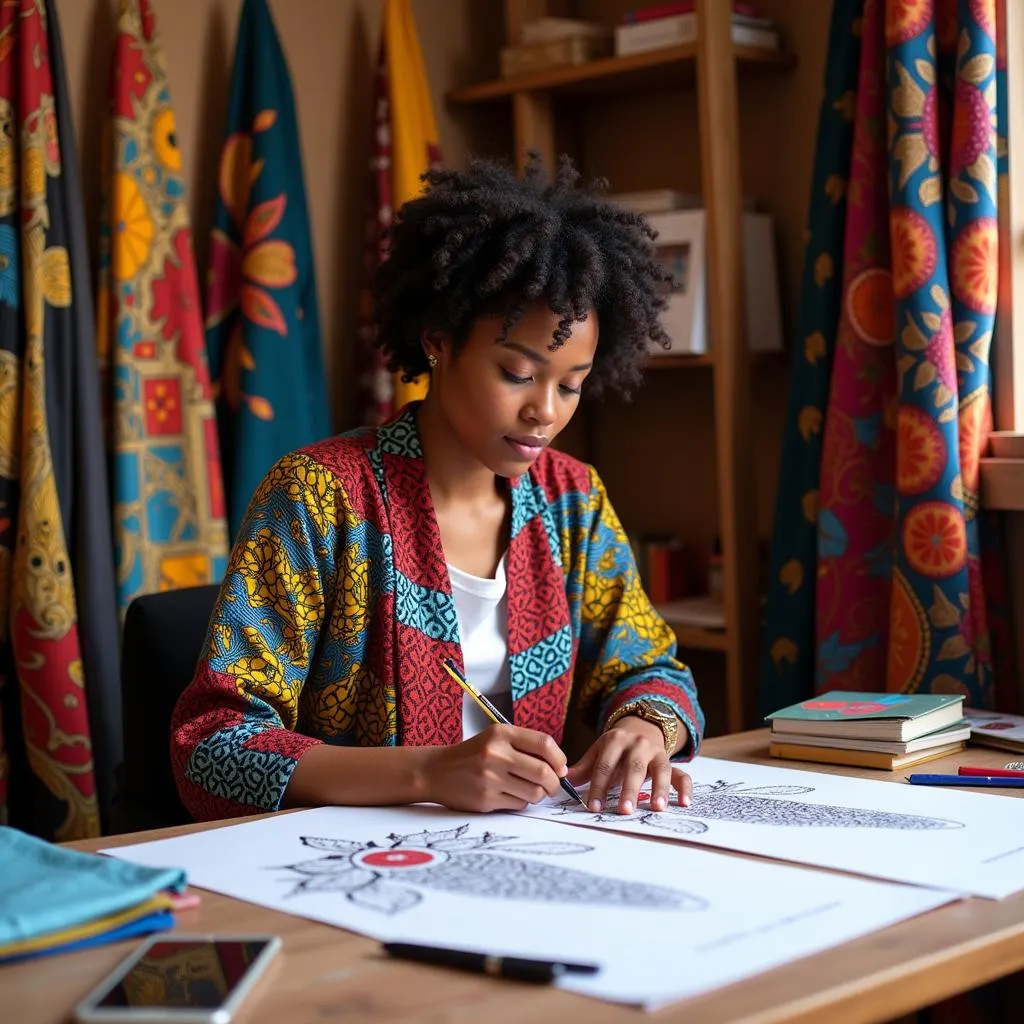The Vibrant World of African Kitenge: A Celebration of Color and Culture
African Kitenge, a bold and beautiful fabric, has woven its way into the hearts and wardrobes of people worldwide. More than just cloth, kitenge represents a vibrant tapestry of African history, art, and cultural expression. This article delves into the captivating world of African kitenge, exploring its origins, diverse uses, and enduring significance in contemporary fashion.
 Woman in Kitenge Dress
Woman in Kitenge Dress
Unveiling the History of Kitenge: From Humble Beginnings to Global Icon
The story of kitenge is intertwined with the history of East Africa, dating back to the 19th century. While its origins are debated, one popular narrative traces kitenge to Zanzibar, where traders introduced colorful cotton fabrics from Indonesia. These fabrics, often featuring intricate batik designs, quickly gained popularity among Swahili women. The name “kitenge” itself is believed to have originated from the Swahili word “kuchinga,” meaning “to wrap.”
As kitenge’s popularity grew, so did its evolution. Local artisans began incorporating their own artistic interpretations, blending traditional African motifs with Indonesian influences. This fusion resulted in the distinctive and eye-catching designs we associate with kitenge today.
Beyond Fabric: The Cultural Significance of African Kitenge Designs
In many African cultures, kitenge transcends its material form to embody deeper meanings. It plays a significant role in various ceremonies and traditions:
- Celebrations and Festivities: Kitenge garments are often worn during weddings, festivals, and other joyous occasions, symbolizing happiness and prosperity.
- Gifts and Offerings: Presenting someone with a piece of kitenge signifies respect, goodwill, and a strengthening of bonds.
- Social Identity and Expression: Different kitenge patterns and colors can represent specific communities, regions, or even social status.
 Women Dancing in Kitenge Outfits
Women Dancing in Kitenge Outfits
The Versatility of Kitenge: From Clothing to Home Decor
One of the most remarkable aspects of African kitenge is its incredible versatility. While it is primarily associated with clothing, kitenge’s applications extend far beyond the realm of fashion:
- Kitenge Gowns and Dresses: From elegant evening gowns to casual everyday wear, African kitenge gowns exemplify the fabric’s adaptability and timeless appeal.
- Headwraps and Accessories: Kitenge headwraps, known as “dhuku” in Swahili, are not only stylish but also hold cultural significance. The fabric is also used to create bags, jewelry, and other accessories.
- Home Decor: Kitenge’s vibrancy extends to home furnishings, adding a touch of African flair to cushions, curtains, tablecloths, and even wall art.
The Global Rise of Kitenge: A Fashion Statement with a Conscience
In recent years, African kitenge has experienced a surge in global popularity. Fashion designers worldwide have embraced its vibrant patterns and cultural richness, incorporating kitenge into their collections and showcasing it on international runways.
Beyond its aesthetic appeal, kitenge also aligns with the growing movement toward sustainable and ethical fashion. As a natural and often handmade fabric, kitenge offers an eco-friendly alternative to mass-produced textiles.
 Kitenge Fashion Design
Kitenge Fashion Design
Embracing the Spirit of Kitenge: A Celebration of Africa’s Creative Soul
African kitenge is much more than just a fabric; it’s a testament to Africa’s rich cultural heritage and artistic ingenuity. Its vibrant colors, bold patterns, and versatility continue to captivate the world, solidifying its status as a timeless and cherished symbol of African identity and creativity. Whether adorning a runway in Paris or a marketplace in Nairobi, African kitenge designs serve as a powerful reminder of the beauty and diversity found within the African continent.
Frequently Asked Questions about African Kitenge
1. How do I wash and care for my kitenge garments?
Kitenge is generally easy to care for. Handwashing with mild detergent is recommended for the first few washes to prevent color bleeding. Afterward, machine washing on a gentle cycle with cold water is usually safe. Air drying is best to preserve the vibrancy of the colors.
2. What is the typical width of kitenge fabric?
Kitenge fabric typically comes in widths ranging from 42 to 48 inches.
3. Can men wear kitenge?
Absolutely! While traditionally associated with women’s clothing, kitenge is increasingly being incorporated into menswear. Men can find stylish shirts, trousers, and even suits made from this vibrant fabric.
4. Is kitenge only found in Africa?
While originating in Africa, kitenge’s popularity has spread worldwide. You can find kitenge fabrics and garments in various online and physical stores globally.
5. Are there different types of kitenge fabric?
Yes, kitenge refers to the print style rather than a specific fabric. You can find kitenge prints on various materials, including cotton, silk, and even synthetics like polyester.
** Need more information about African cloth patterns? Want to explore different African dress patterns and designs? Contact us! Our dedicated team is available 24/7 to assist you. Reach us at +255768904061, kaka.mag@gmail.com, or visit our location in Mbarali DC Mawindi, Kangaga, Tanzania.